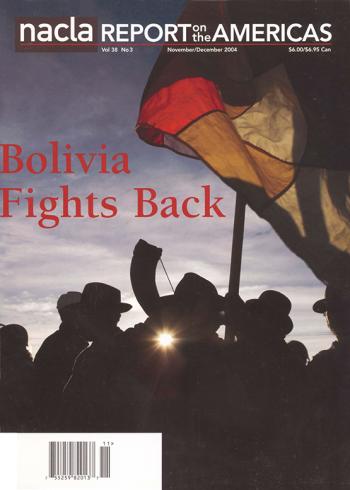Report
The year 2003 marked a dramatic point in Bolivia’s recent history. In January, February, and then again in September and October, the country was rocked by massive social upheaval. In January, Bolivians widely expressed their ongoing rejection of the U.S. government’s unilateral imposition of drug control policies.
Linda Farthing & Kathryn Ledebur
In unguarded moments during the month-long road blockade of September and October 2000, coca growers and Bolivian security forces chatted, played soccer and ate together while they waited for government orders to reinitiate their confrontation.
Forrest Hylton & Sinclair Thomson
The great anti-colonial indigenous insurrection of 1781 has haunted republican Bolivia since its founding in 1825. From their military encampment in El Alto overlooking the colonial city of La Paz, Aymara leaders Túpaj Katari and Bartolina Sisa laid siege to the ruling Spanish elite from March to October 1781.
The U.S. government allows the Bolivian government only the minimal amount of wiggle room required to keep the masses at bay: a shred of maneuverability to neutralize the demands of the indigenous and working population. But Washington’s serious miscalculations created an explosive situation in which the government in La Paz is hostage to contradictory policies that the country’s social movements constantly challenge.
During these first years of the 21st century, Bolivia finds itself again in the throes of an agrarian crisis affecting vast numbers of its struggling indigenous campesino citizens. Purchasing power for rural dwellers is falling, prices of key food crops are dropping, food production is stagnating, highland plots continue to shrink in size, highland droughts are becoming more common and the carrying capacity of the land in campesino communities is declining.

